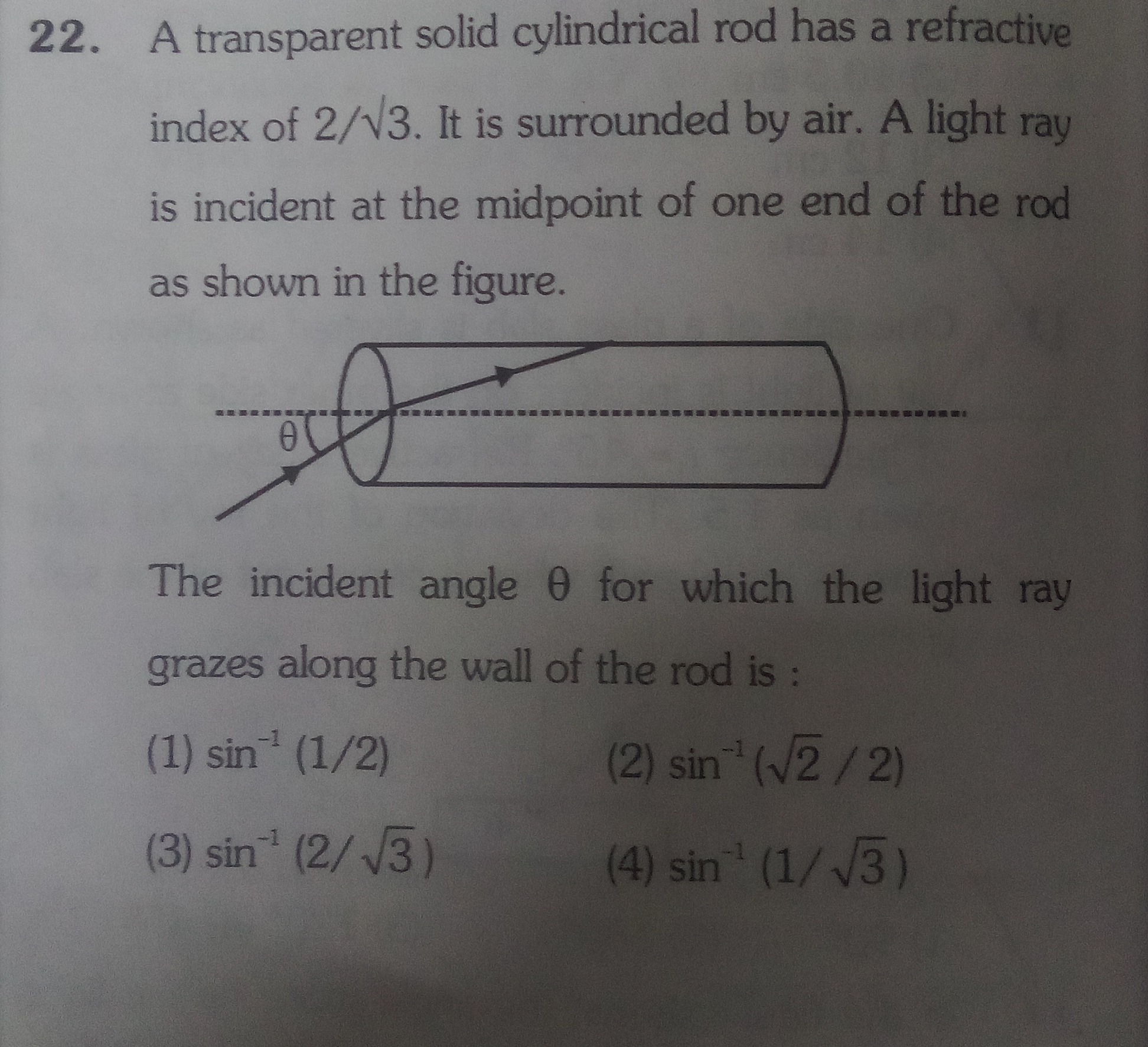Question
Question: A transparent solid cylindrical rod has a refractive index of 2/√3. It is surrounded by air. A light...
A transparent solid cylindrical rod has a refractive index of 2/√3. It is surrounded by air. A light ray is incident at the midpoint of one end of the rod as shown in the figure. The incident angle θ for which the light ray grazes along the wall of the rod is :

sin⁻¹ (1/2)
sin⁻¹ (√2 / 2)
sin⁻¹ (2 / √3)
sin⁻¹ (1 / √3)
sin⁻¹ (1 / √3)
Solution
-
Snell's Law at the End Face: The light ray enters the cylindrical rod from air. Let θ be the angle of incidence and ϕ1 be the angle of refraction inside the rod, both measured with respect to the normal (axis of the cylinder). According to Snell's law: nairsinθ=nsinϕ1 Given nair=1 and n=2/3, we have: 1⋅sinθ=(2/3)sinϕ1 sinθ=32sinϕ1
-
Angle of Incidence at the Cylindrical Wall: The ray travels inside the rod and strikes the cylindrical wall. The normal to the cylindrical wall is radial. If the ray makes an angle ϕ1 with the axis of the cylinder, the angle it makes with the radial direction (which is perpendicular to the axis) is 90∘−ϕ1. Thus, the angle of incidence at the cylindrical wall is α=90∘−ϕ1.
-
Condition for Grazing Along the Wall: The condition that the light ray "grazes along the wall of the rod" means that the ray is refracted along the surface of the cylinder into the air. This occurs when the angle of incidence at the cylindrical wall is equal to the critical angle (ic) for the rod-air interface, and the angle of refraction is 90∘. The critical angle is given by sinic=nnair=2/31=23. Therefore, ic=arcsin(3/2)=60∘. So, the angle of incidence at the cylindrical wall must be α=ic=60∘.
-
Finding ϕ1: Using the relation α=90∘−ϕ1, we get: 60∘=90∘−ϕ1 ϕ1=90∘−60∘=30∘.
-
Finding θ: Substitute the value of ϕ1 into the Snell's law equation from step 1: sinθ=32sin30∘ sinθ=32⋅21 sinθ=31 θ=arcsin(31)
